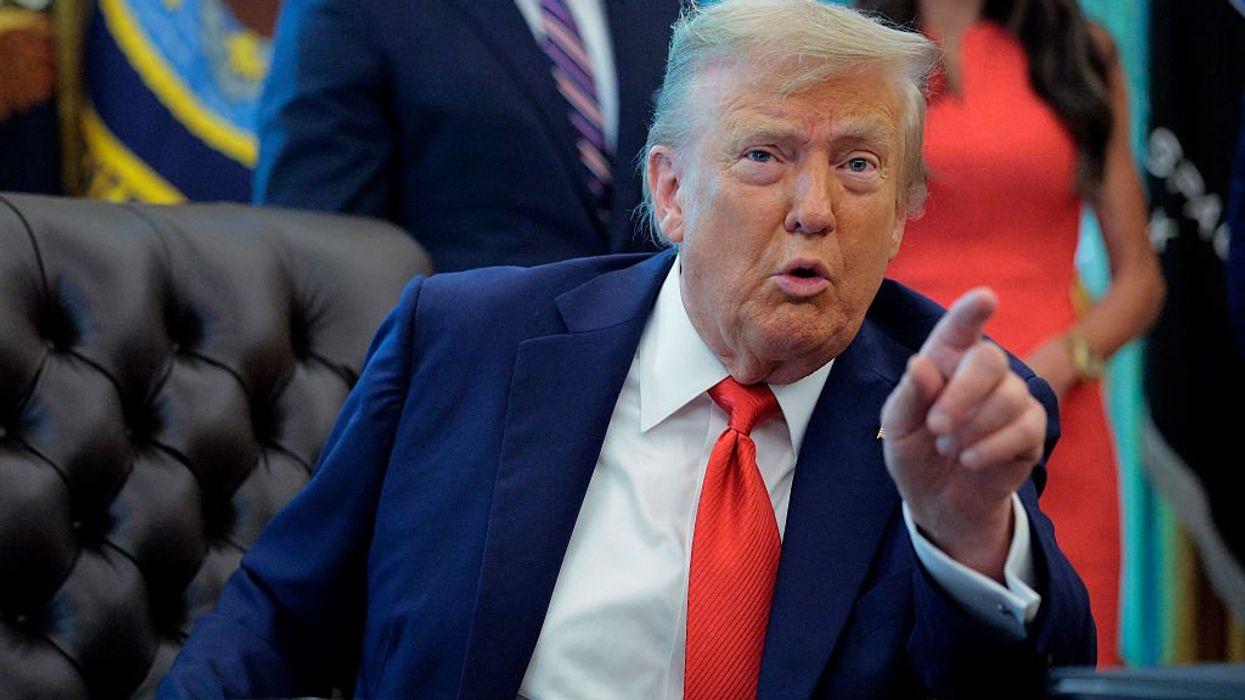In the wake of President Obama’s Obamacare pep rally in the Rose Garden yesterday, it does not appear as though anyone is buying the ‘don’t worry, our product is great’ message the President was trying to sell. Glenn opened the radio program this morning playing the nearly 10 minute scathing Obamacare critique that came courtesy of Jon Stewart last night on The Daily Show.
“You know what feels really good,” Glenn asked. “Just a moment of Jon Stewart seeing sanity. Here he is last night basically saying, ‘Really, Obamacare? Bring it on.’”
According to Stewart, after the Republicans disastrous handling of the debt ceiling deal, all Democrats needed to do in order to secure a political advantage was execute the implementation of Obamacare in a “mildly competent” fashion. But, as Stewart openly admits, that certainly did not happen.
Watch Stewart’s Obamacare takedown via Comedy Central (Warning: Some strong language):
“I mean that's why he's got, what, 7,500 writers? I mean that was a good 10 minutes of really solid comedy,” Glenn said in reaction to the clip. “You lose Jon Stewart – I can guarantee you the White House was on the phone with Jon Stewart last night. I can guarantee it. You lose Jon Stewart, you lost the battle. You are done.”
President Obama’s quarterly approval rating has dropped three percentage points to 44.5%, according to new Gallup numbers.

The number certainly doesn’t sound great on its own, but when you put the President’s latest quarterly approval rating in historical context, it is even worse.
Three post-World War II presidents -- Ronald Reagan, Dwight Eisenhower, and Bill Clinton -- had significantly higher 19th quarter averages, all near 60%, than Obama. Two presidents had lower 19th quarter averages than Obama: Richard Nixon, whose 19th quarter came during the Watergate investigations, and Lyndon Johnson, attributable mostly to the increasingly unpopular Vietnam War. Obama's 19th quarter approval average is most similar to those of Harry Truman and George W. Bush.
“He's still better than Nixon. Ummm, I don't know if that's what you should be shooting for,” Glenn quipped. “I don't know if that is really good to point out. Yeah, yeah, you know what, better than that guy that almost went to jail.”
With the Obamacare rollout failing and the President’s approval rating faltering, Republicans would be best to stay out of their own way at this point. Perhaps this new report out of Canada will help.
Remember when Sarah Palin was mocked and ridiculed for suggesting ‘death panels’ would be in our future should we move forward with Obamacare. Well, Slate recently published an article titled, “Canada Has Death Panels… and that’s a good thing.”
According to Slate’s Adam Goldenberg:
Last week Canada’s Supreme Court ruled that doctors could not unilaterally ignore a Toronto family’s decision to keep their near-dead husband and father on life support. In the same breath, however, the court also confirmed that, under the laws of Ontario, Canada’s most populous province, a group of government-appointed adjudicators could yet overrule the family’s choice. That tribunal, not the family or the doctors, has the ultimate power to pull the plug.
In other words: Canada has death panels.
….
Still, the Rasouli family’s situation is familiar, and it will only become more commonplace. Modern medicine increasingly allows us to extend life indefinitely, and so the question is no longer whether we can “play God,” but when, how, and who should do so. When humanity demands haste, and justice demands expert knowledge, Ontario’s death panels offer a solution—whatever Sarah Palin says.
“So now what was horrific to even say – it was so bad, we had to discredit anyone who might say anything like that. It was so horrible that it couldn't be true, is now, of course, true,” Glenn said. “It has to be this way… And it's a good thing?”
As of now, it looks like things are going to get a lot worse before they can begin to get any better for this Administration. But, as Glenn explained, much of what is to come will hinge the media and its willingness to be complicit.
“Jon Stewart is going to be the first one to find out, I bet you. I bet you he's going to be the first one to find out on how bad things are… because everybody wants to be invited to the right parties and everybody wants to be in the in club,” Glenn explained. “If Jon Stewart decides ‘I'm not going to take this,’ he's celebrity enough to say ‘I'm not going to take this.’ If he decides to go that way, he will see the wrath… It's a different world, gang. And 99% of people have not recognized it yet.”
Front page image courtesy of the AP

 Chip Somodevilla / Staff | Getty Images
Chip Somodevilla / Staff | Getty Images
 ROBYN BECK / Contributor | Getty Images
ROBYN BECK / Contributor | Getty Images Andrew Harnik / Staff | Getty Images
Andrew Harnik / Staff | Getty Images